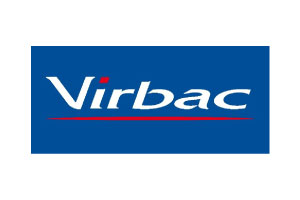Category: P

Royal Mail Tracked 24 (Signed For)

Royal Mail Special Delivery Guaranteed by 1pm

| Category | POM-V |
| Temperature | Ambient |
| MA/VM/EU No: | 00879/4156 |
| Species |
|
| VMD Link | https://www.vmd.defra.gov.uk/productinformationdatabase/product/A008998 |
| NOAH Link | |
| Dosage | Amounts to be administered and administration route Dosage schedule for CATS: The recommended minimum doses are 10 mg/kg bodyweight imidacloprid and 1.0 mg/kg bodyweight moxidectin, equivalent to 0.1 ml of this product per kg bodyweight. The treatment schedule should be based on individual veterinary diagnosis and on the local epidemiological situation. Weight of cat (kg) Pipette size to be used Volume (ml) Imidacloprid (mg/kg bw) Moxidectin (mg/kg bw) < 4kg Prinovox for small cats and ferrets 0.4ml Minimum of 10 Minimum of 1 4-8kg Prinovox for large cats 0.8ml 10-20 1-2 >8kg Use the appropriate combination of pipettes Flea treatment and prevention One treatment prevents future flea infestation for 4 weeks. Existing pupae in the environment may emerge for 6 weeks or longer after treatment is initiated, depending upon climatic conditions. Therefore, it may be necessary to combine the treatment with this product with environmental treatments aimed at breaking the flea life cycle in the surroundings. This can result in a more rapid reduction in the household flea population. The product should be administered at monthly intervals when used as part of a treatment strategy for flea allergy dermatitis. Treatment of ear mite infestation (Otodectes cynotis) A single dose of the product should be administered. A further veterinary examination 30 days after treatment is recommended as some animals may require a second treatment. Do not apply directly to the ear canal. Treatment of notoedric mange (Notoedres cati) A single dose of the product should be administered. Treatment of the lungworm Eucoleus aerophilus (syn. Capillaria aerophila) (adults) A single dose of the product should be administered. Heartworm prevention Cats in areas endemic for heartworm, or those which have travelled to endemic areas, may be infected with adult heartworms. Therefore prior to treatment with this product, the advice provided above should be considered. For prevention of heartworm disease, the product must be applied at regular monthly intervals during the time of the year when mosquitoes (the intermediate hosts which carry and transmit heartworm larvae) are present. The product may be administered throughout the year or at least 1 month before the first expected exposure to mosquitoes. Treatment should continue at regular monthly intervals until 1 month after the last exposure to mosquitoes. To establish a treatment routine, it is recommended that the same day or date be used each month. When replacing another heartworm preventative product in a heartworm prevention programme, the first treatment with this product must be given within 1 month of the last dose of the former medication. In non-endemic areas there should be no risk of cats having heartworm. Therefore they can be treated without special precautions. Roundworm and hookworm treatment In areas endemic for heartworm, monthly treatment may significantly reduce the risk of re-infection caused by the respective roundworms and hookworms. In areas non-endemic for heartworm, the product can be used as part of a seasonal prevention programme against fleas and gastrointestinal nematodes. Dosage schedule for FERRETS: One 0.4 ml pipette of this product should be administered per animal. Do not exceed the recommended dose. The treatment schedule should be based on the local epidemiological situation. Flea treatment and prevention One treatment prevents future flea infestation for 3 weeks. Under heavy flea pressure it may be necessary to repeat administration after 2 weeks. Heartworm prevention Ferrets in areas endemic for heartworm, or those which have travelled to endemic areas, may be infected with adult heartworms. Therefore prior to treatment with this product, the advice provided above should be considered. For prevention of heartworm disease, the product must be applied at regular monthly intervals during the time of the year when mosquitoes (the intermediate hosts which carry and transmit heartworm larvae) are present. The product may be administered throughout the year or at least 1 month before the first expected exposure to mosquitoes. Treatment should continue at regular monthly intervals until 1 month after the last exposure to mosquitoes. In non-endemic areas there should be no risk of ferrets having heartworm. Therefore they can be treated without special precautions. Method of administration For external use only. Remove one pipette from the package. Then hold the pipette in an upright position, and twist and pull off the cap. Reverse the cap and use it to twist and remove the seal from the pipette. Part the fur on the animal's neck at the base of the skull until the skin is visible. Place the tip of the pipette on the skin and squeeze the pipette firmly several times to empty its contents directly onto the skin. Application at the base of the skull will minimise the opportunity for the animal to lick the product. Apply only to undamaged skin. Overdose Up to 10 times the recommended dose was tolerated in cats with no evidence of adverse effects or undesirable clinical signs. The product was administered to kittens at up to 5 times the recommended dose, every 2 weeks for 6 treatments, and there were no serious safety concerns. Transient mydriasis, salivation, vomiting and transient rapid respiration were observed. After accidental oral ingestion or overdose, neurological signs (most of which are transient) such as ataxia, generalised tremors, ocular signs (dilated pupils, little pupillary reflex, nystagmus), abnormal respiration, salivation and vomiting may occur in very rare cases. In case of accidental oral uptake, symptomatic treatment should be administered. There is no known specific antidote. The use of activated charcoal may be beneficial. |
| Withdrawals |